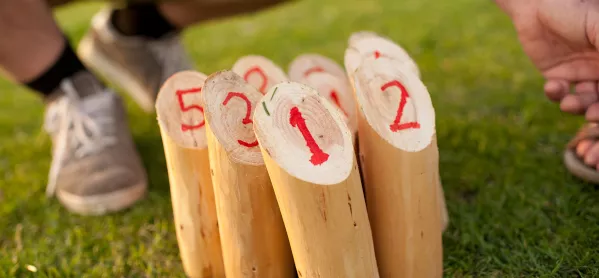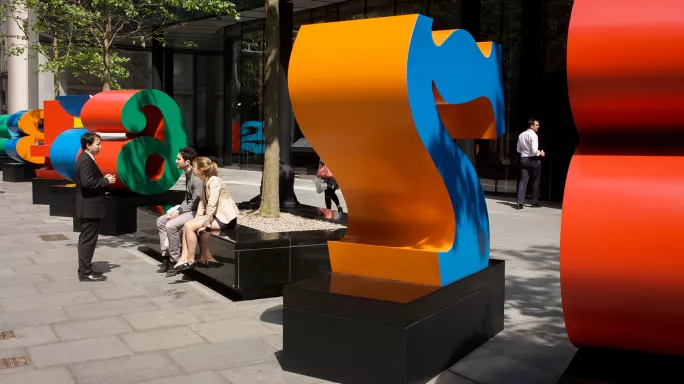We know that young children can play creatively for long periods of time with very little.
Think of the typical Christmas scenario when an empty box gets more attention than the shiny new toy.
We should bear this in mind when thinking about early play, especially in the face of challenges around funding.
Quick read: ‘It’s time for schools to embrace outdoor learning’
Quick listen: Why ‘spatial ability’ could be the key to Stem success
Want to know more? Why do we set in maths when all the evidence tells us not to?
So how can we teach successfully with the most basic and inexpensive resources?
One answer is to head outside. That’s what my school has done, maximising our opportunities for outdoor learning. We don’t have a lot of expensive equipment, but we have lots of space and some really creative teaching happening.
We’ve found that physical movement can be hugely useful in helping young children to grasp maths concepts. They learn through jumping, hopping and clapping as they count.
And there are so many elements of maths that work more effectively when you offer more space. It is a great way to start teaching length and height, for example, because children can explore them fully, on a much larger scale than in a classroom. So how do we do it?
Planning for outdoor learning
Preparation is important for teaching outdoors. If we want it to work, we have to give it give equal status to indoor learning. We often plan for objective-led small group activities that focus on maths. The more we do this, the more we notice children mirroring these mathematical skills in their child-initiated play.
Alternative activities
It is a refreshing change to turn off the whiteboard and head outside. We can gather in a large circle and use the space for whole-class learning activities such as jumping along a number line, counting large objects together and exploring addition and subtraction.
Training
We ensure that we have skilled adults who recognise the emergent stages of maths in children’s play; this enables them to continually extend the learning. Adults also play a key role in modelling maths vocabulary. This can get overlooked, but it is an essential area contributing to children achieving the ELGs.
Top tips
Looking ahead to when you get outside, here are some things that we have been doing that will hopefully help you, too.
1. Raid the PE cupboard
Beanbags, ropes and balls are so useful for games that require children to keep score (thus promoting counting skills). PE hoops are particularly useful as a visual representation of a set, which can be used for classifying, sorting or addition.
2. Make the most of natural resources
Have plentiful supplies of natural materials, such as pebbles, pine cones, conkers and sticks; children can use them to explore quantity, pattern and counting. And offer good-quality sand and water play provision with different kinds of measuring equipment and resources to explore capacity.
3. Think big with other equipment
Large, robust equipment can be used to represent number. You can paint numbers on tree stumps or use cones, wooden blocks, giant dice, large dominoes, crates and so on.
4. Encourage collaboration
Collaborative play offers great potential for mathematical problem-solving. Large-scale construction or den-building can promote skills in measuring, comparing, estimating and testing ideas, while building “towers” in descending order using vertical or horizontal lines requires comparison of visual quantities and understanding of place value.
Teaching outdoors has encouraged us to use natural resources and be really innovative with our planning. In my experience, the most successful teaching experiences can come together with a just a few ingredients: a piece of chalk, some pebbles and a bunch of enthusiastic children.
The possibilities are endless.





